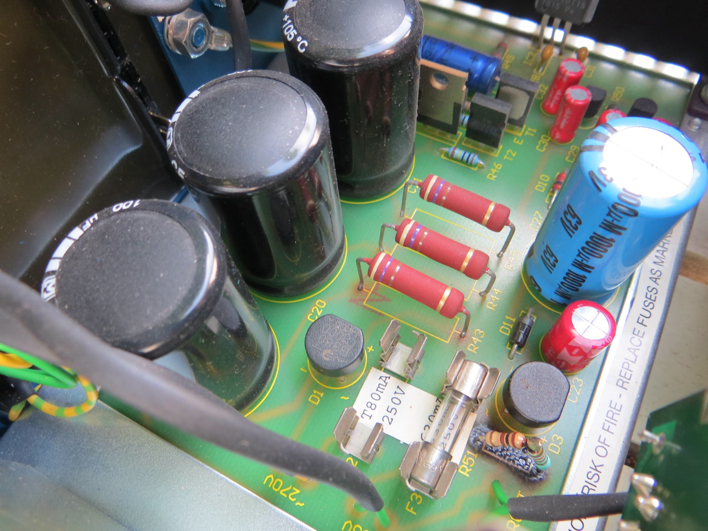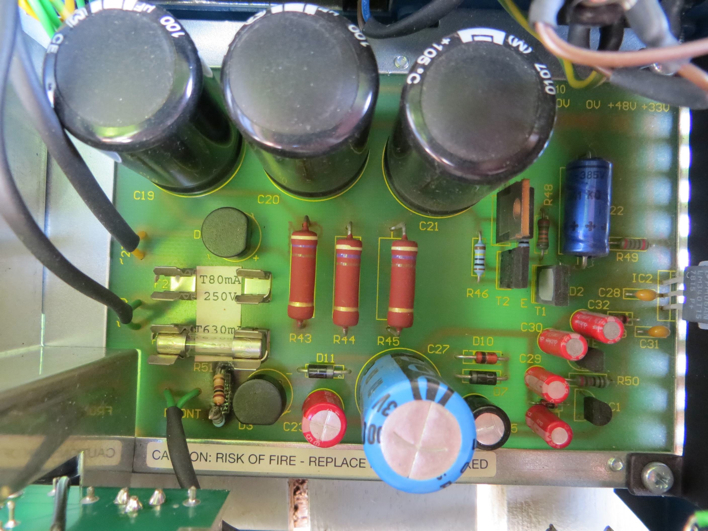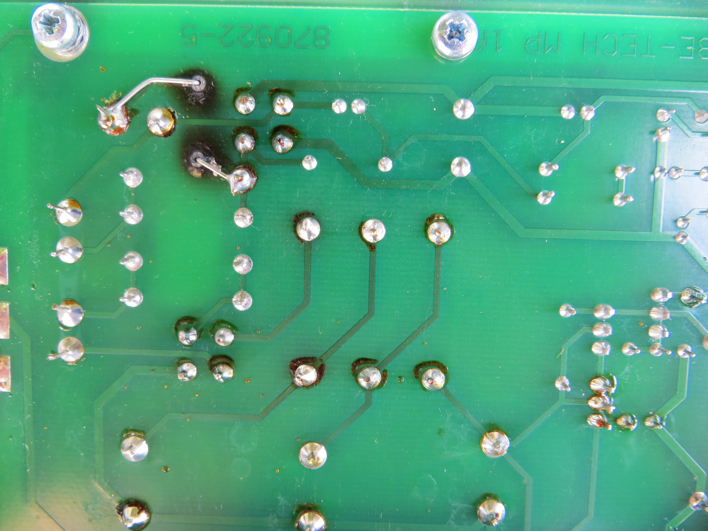I have a question concerning the fuses that keep blowing in my new purchased, though second hand Tube Tech MP-1A.
At the last day of an intense two-week studio session (which means the Tube Tech was on 16 hours/day), the main fuse kept blowing, so I checked the other fuses in the power supply, only to discover the 80mA fuse was blown.
I now wonder why the 80mA fuse blew, because fuses don't just blow because they like it... Could it be the rectifier? Both D1 (B380C1000) and D3 (B40C1000) show some heat discoloration on the PCB, not much though.
And then there is R51 (does anyone know the correct value for this resistor?). This one seems to run very hot because the PCB looks really burned here. But R51 looks already replaced by a previous owner, so I'm not sure if it's still the correct value... looks like it was replaced because the original R51 must have been fried. Both traces to and from R51 are 'replaced' by a nice and neat wire, because the traces must have been too fried and therefor probably broken. Is it normal that R51 runs so very hot?
Also, the pilot light that is in the unit is a 36V, 1,8W. Isn't that a strange value? Or am I going too far now...? Just because R51 does have something to do with the pilot light, no?
Any advice is most welcome, but keep in mind that I can't measure any voltages because the fuses blow in 3 seconds after power up.
Thanks a lot!
At the last day of an intense two-week studio session (which means the Tube Tech was on 16 hours/day), the main fuse kept blowing, so I checked the other fuses in the power supply, only to discover the 80mA fuse was blown.
I now wonder why the 80mA fuse blew, because fuses don't just blow because they like it... Could it be the rectifier? Both D1 (B380C1000) and D3 (B40C1000) show some heat discoloration on the PCB, not much though.
And then there is R51 (does anyone know the correct value for this resistor?). This one seems to run very hot because the PCB looks really burned here. But R51 looks already replaced by a previous owner, so I'm not sure if it's still the correct value... looks like it was replaced because the original R51 must have been fried. Both traces to and from R51 are 'replaced' by a nice and neat wire, because the traces must have been too fried and therefor probably broken. Is it normal that R51 runs so very hot?
Also, the pilot light that is in the unit is a 36V, 1,8W. Isn't that a strange value? Or am I going too far now...? Just because R51 does have something to do with the pilot light, no?
Any advice is most welcome, but keep in mind that I can't measure any voltages because the fuses blow in 3 seconds after power up.
Thanks a lot!





































